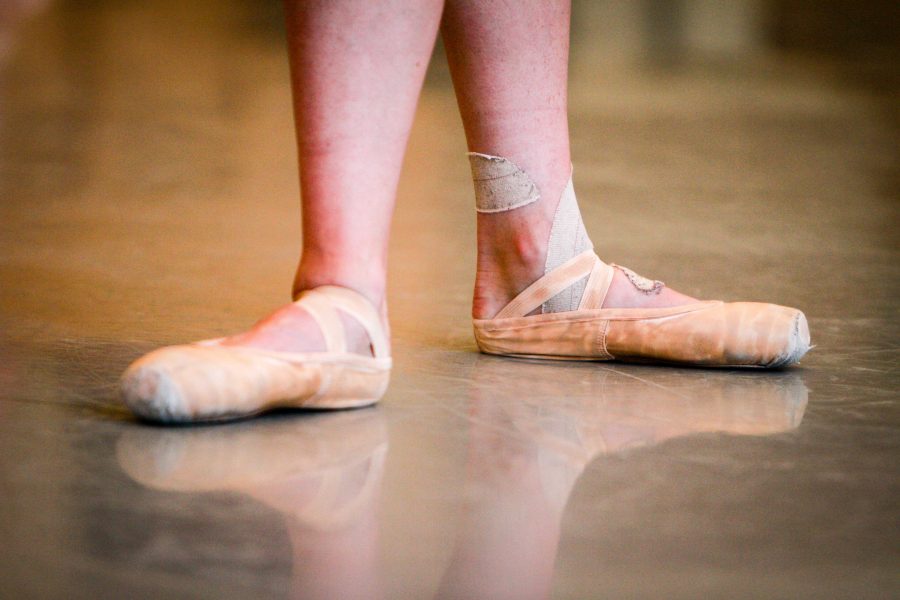“I am not a naturally gifted dancer,” Alyssa Bertelsen, a graduate from the University of Utah ballet program, said. “I don’t have the physique, and my teachers growing up were very sweet. They were like, ‘Alyssa, we love that you love ballet, but like, you’re never going to be a dancer.’”
This seems brutal, to say the least. How could anybody stand against such definitive criticism? “It was a little crushing,” she said. “But it came from a place of love.”
Bertelsen, now the program director for the nonprofit Kid’s Community Ballet in Salt Lake, finds her self assuredness in her spirituality, something both highly personal and prevalent in art. For Bertelsen, as a Christian, God specifically has always been a part of dance. Without having the money to fund dance lessons, it was first through a silent auction at her church that she had the opportunity to take lessons. They even continued to provide scholarships for her throughout high school, which made her keenly aware of God’s influence and gave her an overwhelming sense of gratitude. Taking lessons in high school and focusing your major around that passion are two different things, however.
“Going to school for ballet is just a really intense thing because then you’re being graded on your art … they’re not judging a paper you wrote, they’re judging you,” Bertelsen said. During her freshmen year, she began to be burdened with feelings of inadequacy. Contending with a competitive environment and maintaining a scholarship, things that were out of her control, like her physique, could mean that she would fail out of the program. Her frustration led her into forcing her body to meet those requirements and resulted in her seriously injuring herself. So, she took a step back. “Okay, God,” she said in a literal come-to-Jesus moment. “Fine, I’m done … trying to please them … I’m just going to dance and take care of my body, and I’m going to do this as an act of worship.”
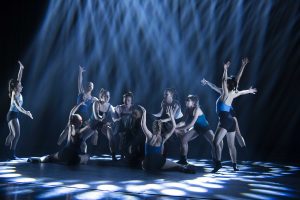
As she redirected her energy, Bertelsen’s injuries began to heal, and her grades went up. Her professors also noted that she had fixed certain techniques that she had actually stopped working on. “It was just the most mind-blowing experience because I knew nothing had changed physically for me, it was all mental,” she said. In letting go of the control and pressure of performance she found “so much more freedom in [her] movement.” Her entire perspective transformed, and dance became about the “overflowing of the soul instead of proving [herself] through dancing.”
She said, “I become smaller in a way that I become a lot bigger.” This concept came down to a matter of identity. She sensed in her nonspiritual peers an attitude of “ballet is my identity,” meaning that when they began to struggle, their self-worth wavered. She witnessed a great deal of depression and anxiety in the department, including many suicide attempts. This only amplified the importance of faith for her. She found her identity in a figure outside of dance that, for her, embodies mercy and who is “intricately involved in the interworking” of her life. All of the pressures of performance and perfection can be relinquished.
Most people Bertelsen encountered in the ballet program didn’t have a defined spirituality but believed in the idea of a God to some degree. People in modern dance, she found, were less agnostic and more invested in spirituality as a personal concept that didn’t relate to a higher power. Enough Christians were in the department that they had an organized bible study group where together they could point out passages and say “this is my identity, this is my worth.” Some people were wary of Bertelsen initially, especially if they didn’t have a spiritual structure to their self-expression. Because she didn’t have the same sense of competition that other dancers experienced, relationships with them became honest and vulnerable. They came to her with their fears and anxiety, especially about body image because she could be open with them and non-threatening. Where she saw a divide was between art and religion itself.
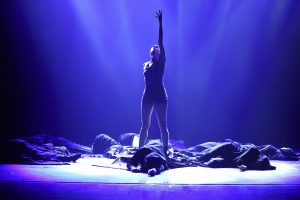
Let’s back up here for a second. Western dance has a complicated relationship with religion. Sometimes they have a committed relationship, other times religion drops dance hard in favor of worldly deprivation. Traditionally, dance has been performed as a means of connecting to something transcendent and beyond ourselves. In Northern Africa, centuries ago, when a dancer seemed to be moved by more than themselves, the crowd would chant “Allah.” Several sacred dances come out of Hinduism. Believe it or not, dance has even been central to Christianity. David of the Old Testament danced before the Lord, practically naked. We also know that moments in Christian history condemned it as secular at best and pagan and indulgent at worst. It’s one thing to dance to honor a supernatural power and another entirely to be religious and dance.
“People are afraid of what they don’t understand,” Bertelsen said. “And art connects us to something in ourselves and something in the world around us, to people around us and God that we can’t understand … you can’t put [the] rules on dance that you can on people’s behavior in church, and I think that’s scary for some people.”
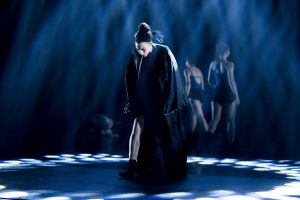
Part of this fear, concerning all parties involved, comes from an absence of communication in spirituality which has no common definition. Molly Heller, an assistant professor for the modern dance program, has an intuitive sense of the weight this term has. She preferred to refer to the influence in her work as “spirit infused.” For Heller, spirituality has a closer connection to the notion of aura as something reliant on time and place. Ephemerality brings that quality of “spirit-filled” presence she searches for in her work.
“That’s why dance is spirit-filled because it’s fleeting and of the moment and anything of the moment is essence, is energy,” she said. Heller sees every element that comes into making a moment as working synergistically. “I definitely don’t find spirituality at this point of my life connected to religious practice,” she said and could not speak to the way in which other U instructors viewed it, or didn’t, in their teaching. “In my pedagogy, there’s an honoring of all diverse perspectives … the language has to be inclusive … so as not to exclude people,” Heller said.
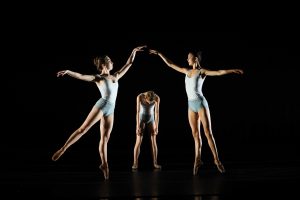
Many dancers in the U program don’t find a need to define spirituality or to tap into anything transcendent. As self-expression, dance will bear the essence of who the dancer is. Art can appear like an optical allusion. It’s a rabbit, it’s a duck. It depends on how you look at it. We feed meaning into what we perform and perceive which does not invalidate those readings we impose. Art necessitates subjectivity. Something happens, though, when art stops being about performance. Egoism drops, and people can create freely. Spirituality does not need to interfere with how people interact in the U dance program — with what they wear to how they perform. People in the program seem to value inclusivity and freedom of expression. For Bertelsen, at least, spirituality, and in her case religion, did not alienate her.
“People warned me that I would be ostracized,” she said. “I didn’t really experience that at all … we walked alongside each other in our spiritual journeys even though we understand those very differently.”
This article is part of the Poynter College Media Project. Click here for more stories and information on the topic “Are U Mormon?”


